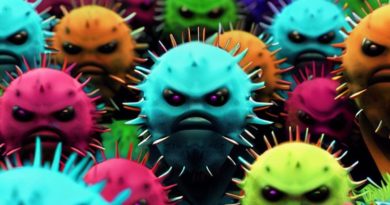Escaping Catch-22 — Overcoming Covid Vaccine Hesitancy | NEJM

Mr. K. is a 56-year-old man who avoids vaccines and decided with his wife not to vaccinate their children. “People disregard you as a conspiracy theorist,” he told me, “but we put a lot of thought into making that decision.” Many of Mr. K.’s beliefs were informed by his father-in-law, a pediatrician who has concerns about the safety of vaccines. “He is not a pharma-driven doctor,” Mr. K. explained. “He’s not part of the medical establishment.” The problem with that establishment, as Mr. K. sees it, is not just its drug pushing and profiteering, but its censoring of people who disagree. For instance, in July, when social media companies removed a viral video of physicians suggesting (misleadingly) that hydroxychloroquine was an effective treatment for Covid-19, Mr. K. saw a parallel to attempts to quash antivaccine sentiment. “What is going on with this country where people can’t make their own decisions?” he asked. “I try to find the scientists out there who aren’t afraid of losing a grant — people who have nothing to lose if they speak the truth.”7,8
In both his aversion to mainstream medicine and his perception that people questioning medical dogma are censored, Mr. K. highlights a Catch-22 of vaccine hesitancy: by challenging untruths, we may inadvertently feed the perception that the “real” truth is being suppressed. Larson describes in her book the fallout after pressure from the scientific community resulted in removal of the antivaccination film “Vaxxed” from the Tribeca Film Festival in 2016. The pulling of the film confirmed the belief of vaccine doubters that physicians and scientists are unwilling to engage with any dissent. Moreover, notes Larson, these instances of so-called censorship attract people who, while not necessarily antivaccine, identify with broader rights agendas promoting “freedom” and “a fundamental democratic right to choose.”6
Indeed, while people firmly opposed to all vaccines may be relatively few in number, they wield outsized influence, particularly on social media, over the undecideds. A recent study of expressions of vaccine-related sentiments by 100 million Facebook users found that antivaccine clusters of people, though less numerous than provaccine clusters, have a more central presence in large networks and interact with more undecided clusters.9 Provaccine clusters, meanwhile, engage predominantly in smaller networks, so even though they exert less influence, they often have the “wrong impression that they are winning.” Provaccine clusters are also disadvantaged by the tendency toward “monothematic” messaging, whereas antivaccine pages deploy multithemed narratives to broaden their appeal, touching on safety concerns, alternative medicine, Covid-19 (both causes and cures), and various conspiracy theories. In response to these dangerous disinformation campaigns, social media companies have intensified efforts to label falsehoods and eliminate them. But as Neil Johnson, a physicist and the study’s first author, explained to me, such efforts can backfire.
One of the most widely shared Covid conspiracy theories, for example, is that the vaccines contain microchips that will be used by elites (Bill Gates is often mentioned) or by the government to track people’s behaviors. People propagating the rumor often point to a study of a new technology that delivers microparticles intradermally during vaccination, creating a digital vaccine record.10 The research, funded by the Gates Foundation before Covid, aims to address the challenge of vaccine record keeping, particularly in low-resource countries. Although this technology is not present in any Covid vaccine, Johnson, who has been monitoring vaccine sentiment online throughout the pandemic, cautioned against dismissing the rumor as mere misinformation. “We can hope that Bill Gates won’t eventually use it to track Covid vaccine behavior, just like we hope our neighbors won’t one day wake up and plow their car into our house,” Johnson said. “They could in principle, but it’s highly unreasonable to think that they would.” If the vaccine hesitant feel that they’ve been unfairly accused of spreading misinformation, Johnson explained, they become further emboldened in their doubts. Even ideologically disparate groups unify around such shared skepticism.
Johnson’s observations remind us why teaching the public to “understand science,” the seemingly obvious way to mitigate antiscientific sentiment, may fall short. Many discussions about science denialism conclude with some version of “We just need to get the public to understand science.” But evidence suggests otherwise. Sociologist Gordon Gauchat, for instance, in describing temporal trends in distrust in science, has shown that at least among conservatives, it’s the most educated subgroup who have become increasingly skeptical.11 One possible explanation is that highly educated people are more facile at finding evidence to support their views or in poking holes in evidence that doesn’t. Accordingly, in a 2019 essay on the so-called crisis in truth, in which antivaccine sentiment features prominently, history-of-science professor Steve Shapin makes the surprising argument that there isn’t “too little science in public culture,” but “too much.”12 That’s partly because people who deny climate change or reject vaccines co-opt the language of science to bolster the legitimacy of their views. Their arguments, Shapin writes, are often “garnished with the supposed facts, theories, approved methods, and postures of objectivity and disinterestedness associated with genuine science.”
Where do these bleak observations leave us as we seek to raise confidence in Covid vaccines?
*** This article has been archived for your research. The original version from nejm.org can be found here ***

